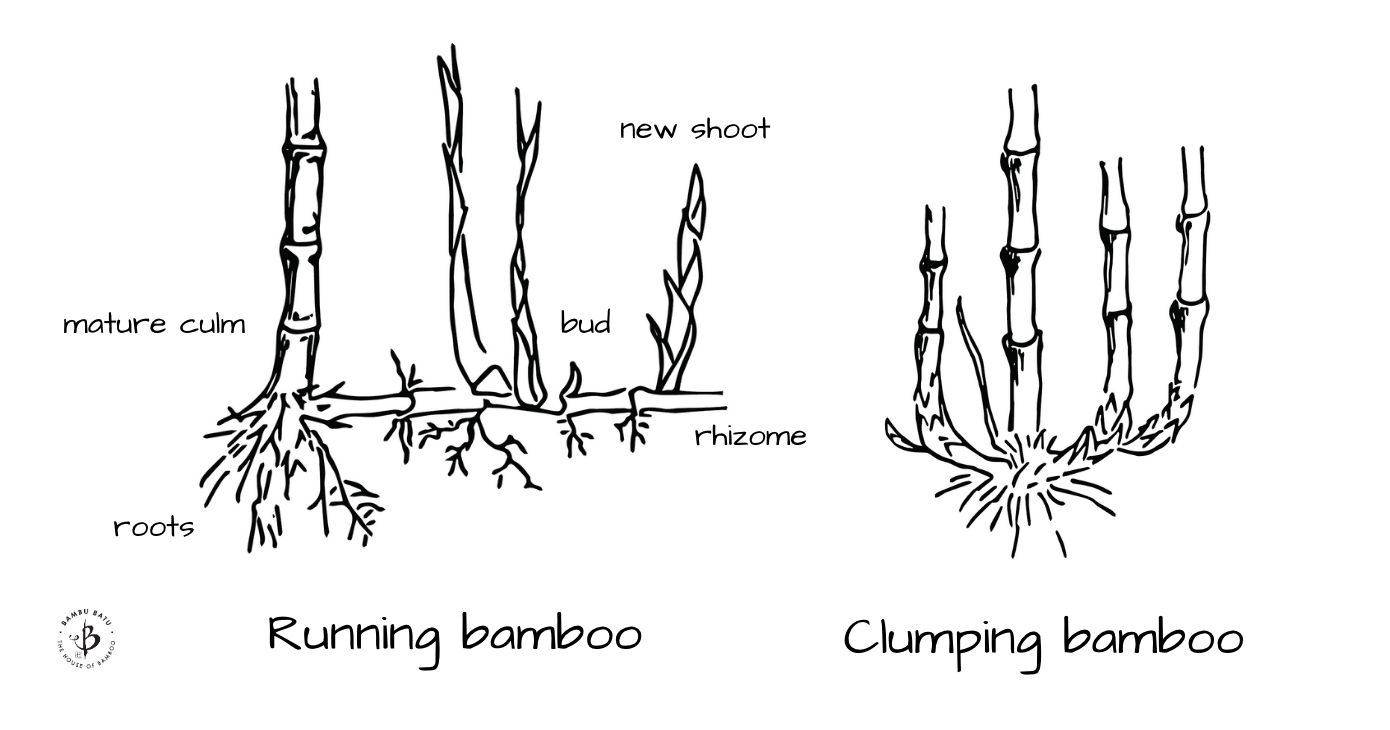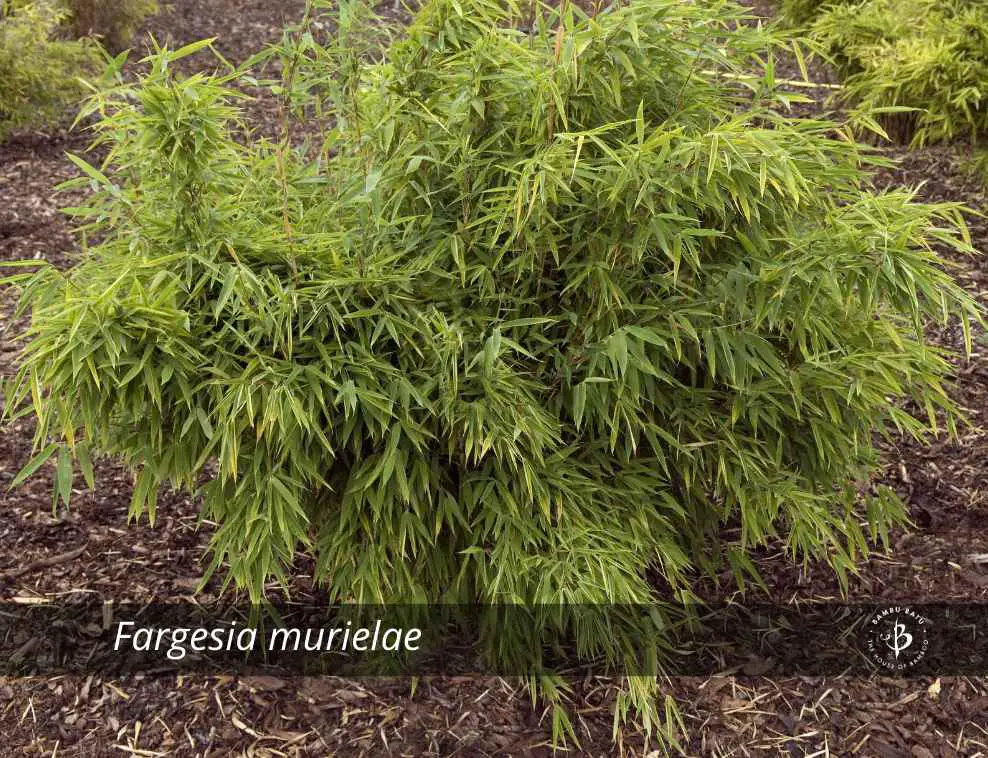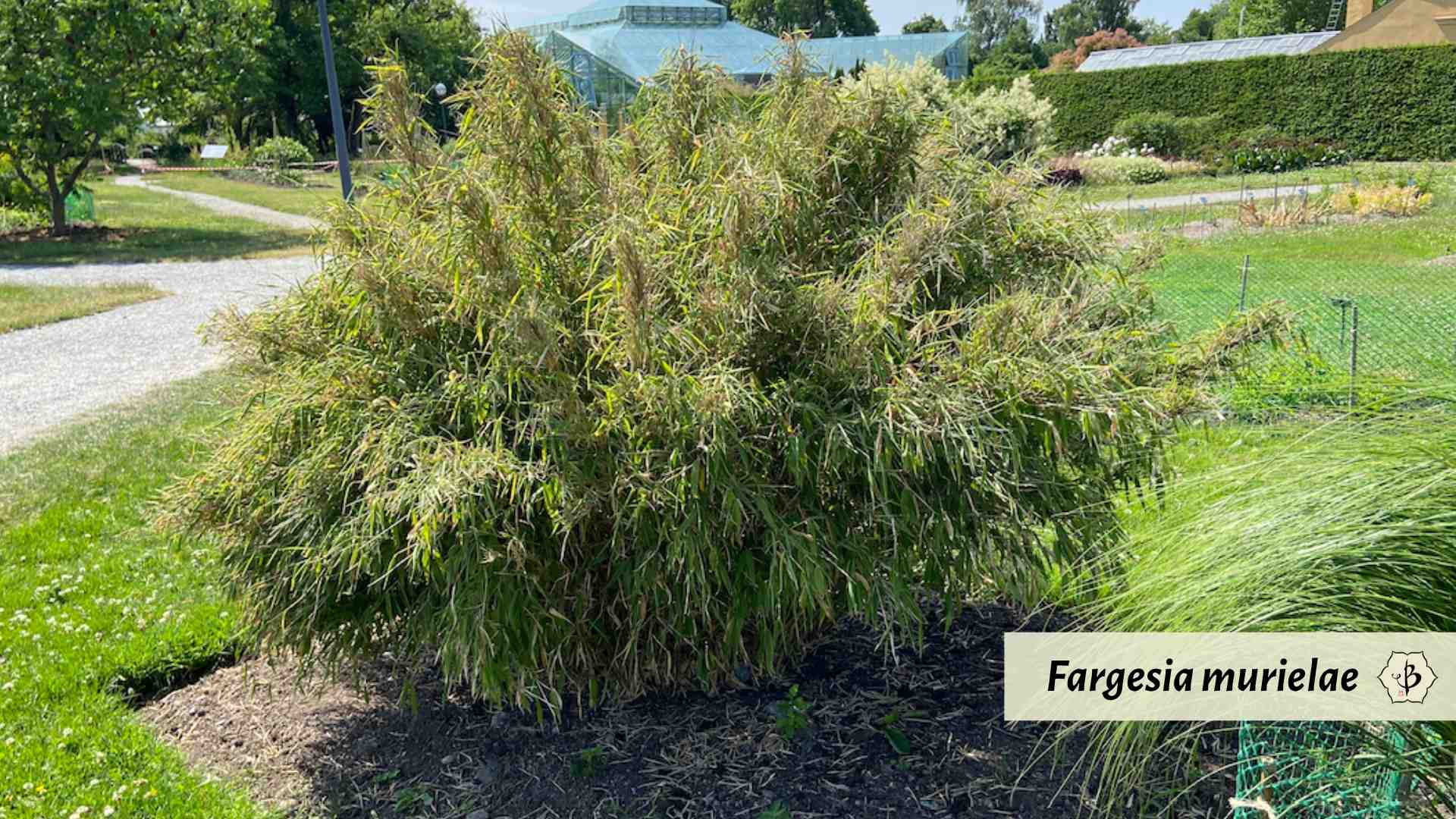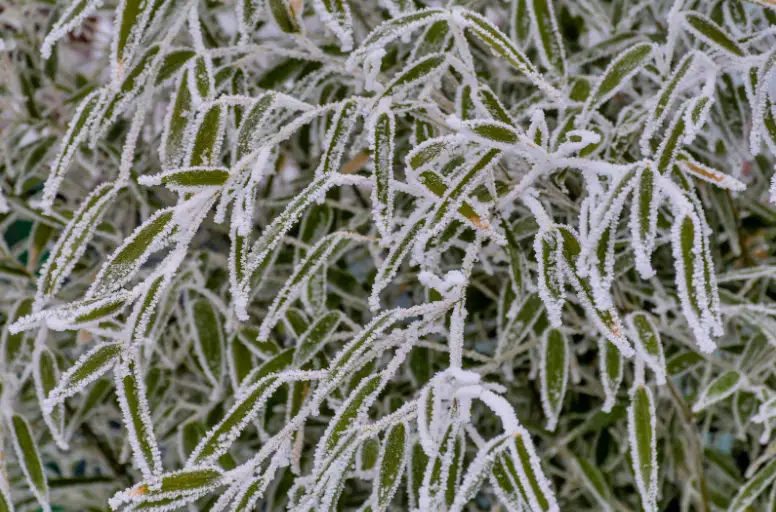So you’d like to plant some bamboo in your garden. It’s fast-growing, with an exotic flair, and it can add a great deal of ornamental elegance to your ordinary greenery. But there are two things you might be worried about. First, you get snow in the winter, and you don’t want the frost to kill your bamboo. Furthermore, you’ve heard that bamboo can spread quickly and aggressively. And you don’t want it to take over your entire yard, overstep your property lines, and lead to frosty relations with your neighbors. Indeed, these are valid concerns, but it’s easy to find non-invasive bamboo species that can withstand the cold.
Many of the most popular varieties of bamboo are quite vigorous and potentially invasive, or else better suited for subtropical conditions. Generally, the more cold-hardy bamboos mostly have running rhizome root systems, while the more manageable clumping varieties tend to prefer warmer climates.
Among the roughly 1,500 types of bamboo, you will find a surprising selection of clumping species that can survive winters as cold as -10º or -20º F. The hardiest clumpers belong to the genus Fargesia. You might also look for members of Borinda, Yushania, Himalayacalamus, and Chusquea. Most of these clumping bamboo varieties are native to the frosty foothills of the Himalayas.
NOTE: This article first appeared in December 2020, most recently updated in January 2024.
Classification of bamboo
While there are literally thousands of types of bamboo out there, most gardeners will start by dividing them into just two categories: runners and clumpers. Basically, the rhizome roots of a bamboo plant can take one of two forms, and that will determine whether the plant runs or clumps.
This is something of an oversimplification, because not all runners run equally, and some clumpers actually like to spread. At the same time, it’s a pretty useful and important means of distinguishing between different bamboos.

Running bamboo
Running bamboo has what are called monopodial or leptomorph rhizomes. These underground appendages stretch outwards, running parallel to the ground and away from the main plant. The tip of the rhizome keeps going, but lateral shoots sprout up periodically to become new culms. So long as there is an ample water supply, the rhizomes will continue reaching out.
Within a given genus, all the species of bamboo will have the same growth habit. Phyllostachys, for example, is probably the most widespread genus of running bamboo. These varieties of bamboo spread quickly, which many gardeners can appreciate. But they also have the potential to become invasive, which can be a real nuisance.
One advantage of running bamboo is that it tends to be more temperate and more tolerant of cold weather. Mostly they are native to regions like central China and Japan, where the winters typically bring snow and frost.
Clumping bamboo
The rhizomes of clumping bamboo are called sympodial or pachymorph. These rhizomes are thicker, and they are generally u-shaped, so that the tip curves upwards to become a new shoot. It’s much easier to manage a clumping bamboo because you don’t have rhizomes creeping underground for several feet and then sending up new shoots a year or so later.
Most clumpers will stop spreading once the plant reaches a certain total diameter, usually between 10 and 20 feet across. But other varieties, which we call open clumpers, can continue spreading indefinitely. Even so, an open clumping bamboo is still easier to contain than most running bamboos, just by the nature of their rhizomes.
Bambusa is one of the most popular genera of clumping bamboo, especially in North America. But, like most clumpers, they usually prefer tropical or subtropical conditions. The giant bamboo varieties like Dendrocalamus of Southeast Asia and Guadua of Central and South America are other examples of tropical clumpers.

Cold hardy clumping bamboo
The general rule of bamboo suggests that runners are temperate and clumpers are tropical and subtropical. But, of course, every rule has exceptions. As it happens, the most cold-hardy bamboo genus of them all is probably Fargesia, and they are clumpers. These varieties are native to China, but they make up the most popular ornamental bamboo species in Europe and Canada, two of the only regions that have no native bamboos of their own.
The foothills and lower slopes of the Himalayas are also home to a few other genera of clumping bamboo. Not all botanists agree, however, and some recognize the genus Borinda as a distinct genus, while others believe them to belong in the same group as Fargesia. Thamnocalamus is another very close relative of the Fargesia.
Also native to that region is the clumping genus Himalayacalamus, which includes numerous blue bamboos, very closely related to the genus Drepanostachyum. The telltale difference between these two genera is that Himalayacalamus have one dominant branch at each node, while Drepanostachyum plants have multiple small branches. Yushania, an open clumping genus, closely related to Borinda and Fargesia, also comes from this mountainous part of the world.
From South America, the genus Chusquea has several cultivars which are native to higher altitudes. They have more of an open clumping habit, and probably aren’t hardy enough for Canada, but they are great down to 0º F (USDA zone 7). And unlike the Himalayan bamboo, most Chusqueas can tolerate very hot weather.

Genus Fargesia
Fargesia dracocephala: “Dragon head bamboo” has thick culms growing to about 10 feet, with a thick, weeping leaf canopy that can provide a good privacy hedge. Not recommended for hot, humid climates, but cold hardy down to -10º F. A popular cultivar of this species is ‘Rufa’, not to be confused with F. rufa, a separate species listed below. A dwarf cultivar of this species is also available, only growing about 6 feet tall, sometimes listed as Yushania confusa.
Fargesia gaolinensis: A recently discovered species from Gaolin County in the Yunnan Province of China. Some authors classify it as Borinda gaolinensis, another good example of the confusion endemic to bamboo taxonomy.
Fargesia murielae: Commonly known as “umbrella bamboo”, many consider this to be among the most beautiful varieties for cultivation. It’s also the most common bamboo in Europe. New shoots have a light blue hue, turning dark green and yellow with age. Growing this bamboo in a shady area will help preserve the rich blue shade. Thin shoots will get about 12 feet tall, and it’s hardy down to -20º F.
Fargesia nitida: “Blue fountain bamboo” earned its name from the dark purple, bluish culms and the thick, cascading canopy of foliage. Very similar in appearance to F. murielae, except for the coloration of the culms. One-inch poles can get up to about 15 feet tall, and thrive in temperatures as low as -20º F.

Fargesia rufa: A compact, thick and bushy variety, Rufa much prefers the cooler climates, and also does well in partial shade, protected from afternoon sun. This species is hardy down to -15º F. Thin culms grow to about 10 feet tall.
Fargesia scabrida: Another colorful variety, with shoots that come in shades of orange, blue and purple, eventually turning deep green. Also known as the “Asian Wonder,” it grows well in sun or shade, and is hardy to -10º F. Mature plants get 10 or 15 feet tall, with culms less than an inch in diameter. Although it’s a clumper, it does have a more vigorous growth habit. Still, its coloration makes it a favorite among bamboo growers.
Other mountain bamboos
Borinda papyrifera: An unusually stunning specimen with beautiful blue culms that turn yellow-green with age. Canes are 1-2 inches thick and 15-25 feet tall. Very pronounced culm sheaths are used for paper making. Native to high elevations of Yunnan, China, and hardy to 10 or 15º F. Not suitable for hot, muggy regions. Compact clumps grow only 5 or 6 feet wide.

Drepanostachyum khasianum: This especially rare variety has blueish culms like many bamboos of the Himalayas, but almost turquoise in this case, with purple highlights. Culms are thin and beautiful, having pronounced nodes with white rings. (See image above.) Grows 10 to 15 feet tall with a graceful, cascading shape. Native to Indian highlands and happier in cool climates and shady locations. Hardy to about 15º F.
Himalayacalamus hookerianus ‘Himalaya Blue’: When gardeners refer to ‘blue bamboo’, this is usually the species they have in mind. More common than some of the others on this list. New culms are light blue, with bits of rust and violet, turning golden with age. Grows 10-20 feet tall, with a more upright shape. Hardy to about 20º F.
Himalayacalamus porcatus ‘ Nepalese Blue”: A smaller, less common relative of the Himalaya Blue, with similar characteristics but only 8 to 10 feet tall. Leaves are slender and delicate, and very attractive overall.
Thamnocalamus tessellatus: A handsome, upright clumper from South Africa, this specimen grows about 10-15 feet tall and is hardy down to about 5º F. Clumps are tight and tidy, with slender 1-inch culms. Good in full sun, but not in hot, humid climates.
Yushania maculata: Another mountain bamboo from southern China, also having light blue culms that turn yellow-green with age. Grows quickly, but clumps stay tight and compact, reaching 10-15 feet tall. Leaves are thin and wispy, and overall quite attractive. Hardy down to about 0º F.
Genus Chusquea
Chusquea culeou: Several cultivars of this species, all native to Chile, have become popular among American bamboo growers. They are somewhat exotic in appearance, and also adaptable to a wide range of climates, from 0º to 100º F. They can also tolerate wetter soil than most other bamboos.
C. culeou ‘Caña prieta’: Attractive, upright culms start out dark brown or black and gradually fade to yellow, but stay dark around the nodes. They grow 10 or 20 feet tall with culms 1 inch thick. Cold hardy to about 0º F.
C. culeou ‘Chilean straight’: Similar to other cultivars but new shoots come up dark green or blueish before fading to yellow. Comparable in size and hardiness.
C. culeou ‘Scandens’: This cultivar is taller than the others, growing up to 20 or 30 feet high, and arching over more at the top. Also hardy down to around 0º F.
Chusquea gigantea: Not as massive as the name might suggest, but still a very impressive and attractive variety of bamboo. This plant grows upright and can reach 20-30 feet high. The interesting culms, buttery yellow but dark green around the nodes, get up to 1.5 or 2 inches in diameter. (See image below.) Most nodes will produce one very long branch accompanied by several smaller ones, resulting in a bushy profusion of foliage. This makes them very effective as privacy screens. They are cold hardy down to 0º F but can also withstand a lot of heat in the summer.

Cultivate your knowledge
To learn more about bamboo cultivation, check out some of these other popular articles and videos.




















